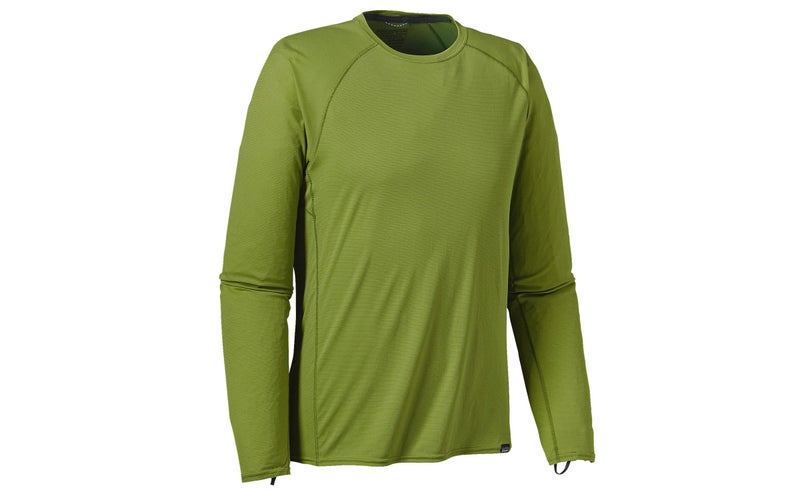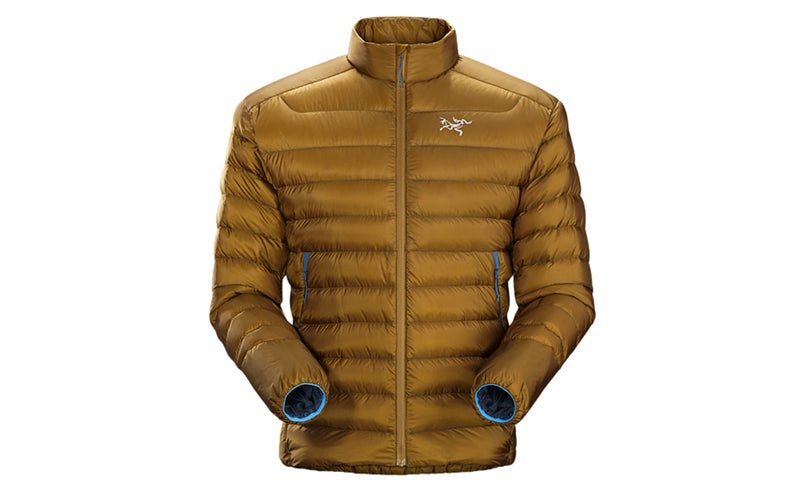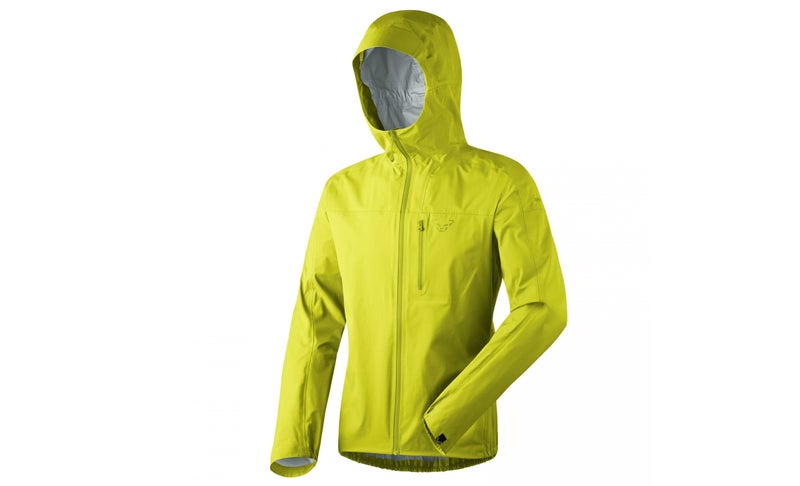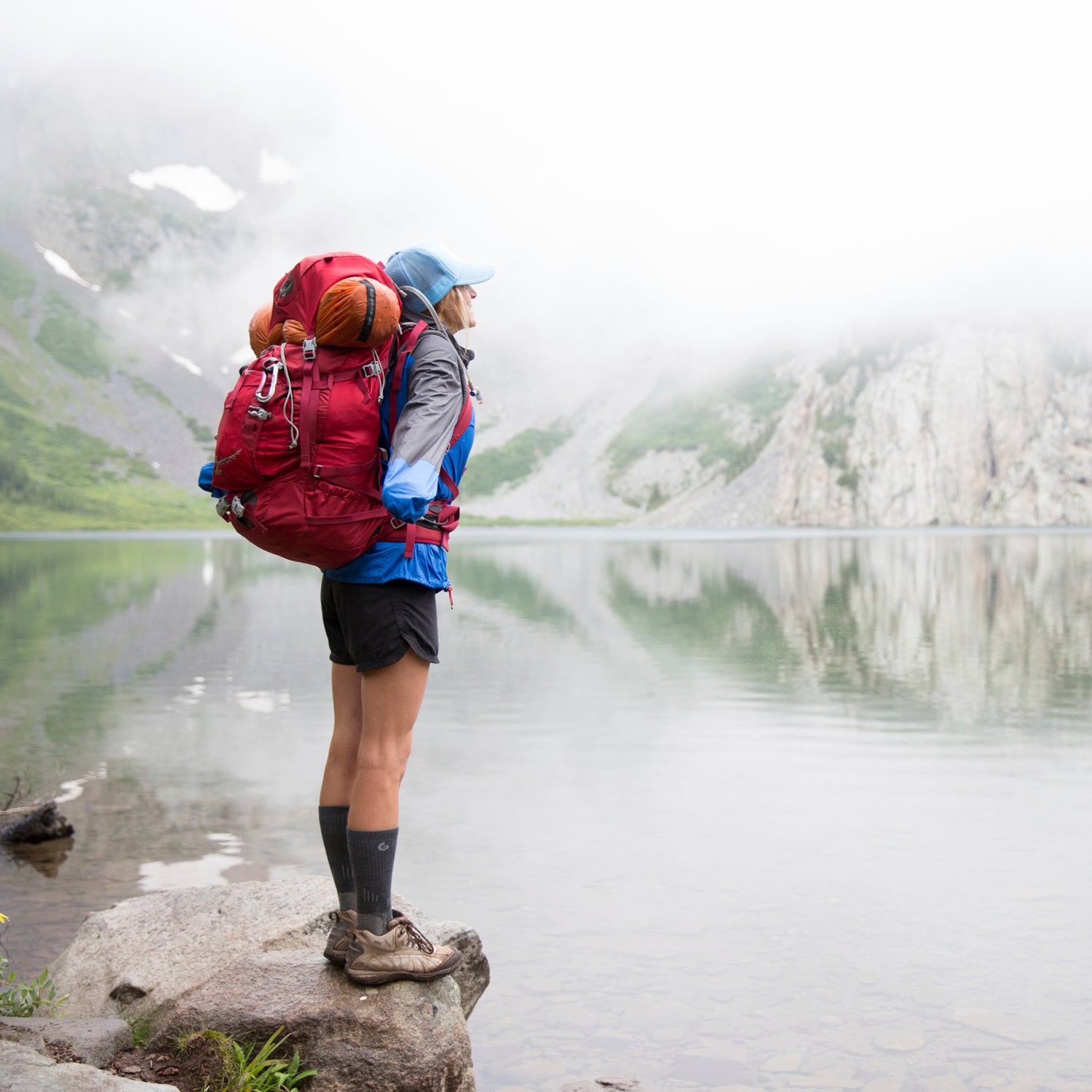I have a simple formula for what to wear during backpacking season (typically spring through fall): three layers up top, two on my legs, and one for my feet. This system regulates temperature extremely well and prepares me for just about any kind of weather I’ll encounter. And while it might sound like a lot of gear, you’ll appreciate the options on the trail. Here’s a list of my favorite pieces.
��������������������

This is your most important layer because it sits next to your skin. There’s a dizzying number of options to choose from, but here’s what I consider when packing: thickness, wicking properties, comfort, and stink management.
I always go with the thinnest long-sleeve base layer I can find. That way, I can use it even during the hottest months to keep sun off, and it pulls double duty as a ski layer when snow starts to fall.
For the best moisture management on a weekend backpacking trip, I go with a top like . It pulls sweat off me faster than anything else I’ve tested. If I’m really drenched, I can hang it on a tree branch, and it’s dry in minutes. This piece also includes Polygiene, a silver salt treatment that helps cut the stink. If I’m going on a longer trip, I always go with merino wool—something like —because I can wear it for days without having to wash it (truly). And while wool doesn’t pull moisture away from your skin as quickly as a synthetic, it’s still pretty damn good—and a bit warmer to boot.
I hike in shorts like these from or pants like , but I like to sleep in the , which add a lot of warmth despite their thin material. I also like having the option to throw on this base layer under my shorts or pants when temps drop.
We could write an entire article about backpacking socks, but to keep it short, I suggest a pair of merino hikers that ft well with your boots. Some people prefer some padding styles, while others like a thinner sock. There are a lot of great brands to choose from, but I’ve found that hold up better than others I’ve tried. When it comes to comfort, the options from are my favorites.
Finally, I always carry a lightweight face cover like the On cold days, I pull it over my ears and wear it under a trucker cap. On days when I’m in the high-alpine sun, it keeps my neck and ears from going tomato red.
Midlayers

I pull on a midlayer when I’m taking a break on the trail or hanging out at camp after dark. The most common choice here is between a traditional fleece and a puffy. Fleeces are usually less expensive, while puffies tend to be warmer.
I like the fleece because it’s featherweight, made from Polartec Microfleece, and costs only $60. I do have to be careful with my fleece, however, because just like synthetic base layers, it will hold stink. I often hang this piece to let it air out once I get to camp.
For puffies, you’ll need to choose between down or synthetic fill. You also need to decide how warm you want to go. I usually opt for a synthetic option like Patagonia Nano-Air when I’m hiking in a wet climate because it generates heat even when wet and dries in under an hour. Everywhere else, however, I like a down product like the 8.6-ounce . It’s more compressible, taking up less space in my bag, and has a higher warmth-to-weight ratio. The down in this jacket is also treated so it’s water resistant and won’t lose loft if you spill your coffee on it.
Patagonia makes , but they’re usually overkill unless you want something to lounge in around camp or if you’re backpacking in a really cold spot.
Outer Layers

This is the layer you throw on when it starts pouring or you’re on a windy ridge at 13,000 feet. The least expensive solution is a poncho from the Army surplus store. It will keep you dry around camp and will do just find on cold-weather hikes. But it tears easily and provides zero breathability in the heat.
If you want a basic rain shell that’ll keep you bone dry from the outside and breath relatively well, I suggest the . It has niceties such as pit zips, plenty of pockets, and sealed seams, and costs just $100.
For those who live in places where you’re going to use your rain jacket a lot, I’d consider a more expensive option made from a material like Gore-Tex, NeoShell, or eVent. All three of these materials are totally waterproof but breathe better than what you’ll find on the PreCip. I like the jacket. Yes, it’s pricey, but the extra breathability and durability are worth it if you spend a lot of time outside.


